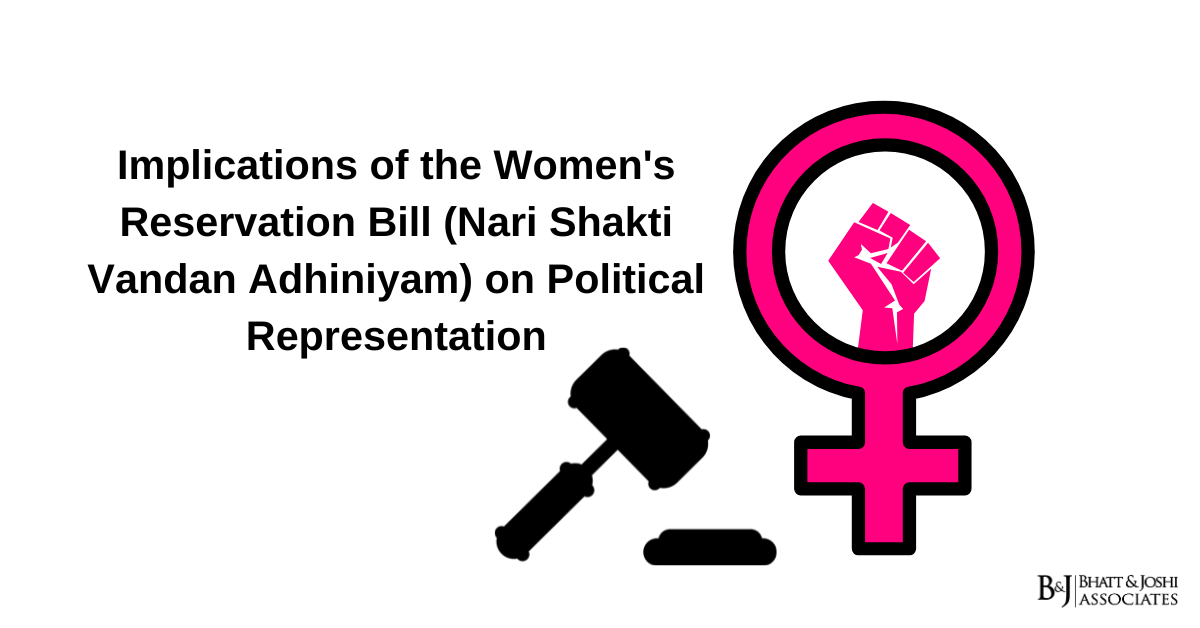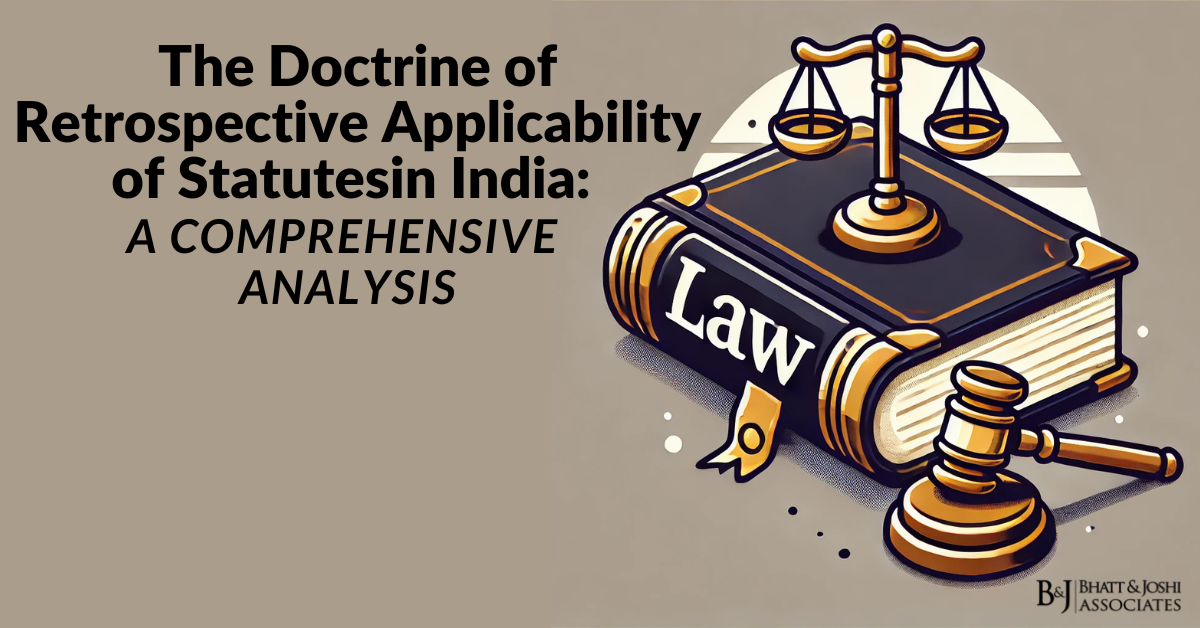Introduction
The Women’s Reservation Bill, formally known as the Nari Shakti Vandan Adhiniyam, marks a transformative step in India’s political landscape. By mandating the reservation of a specific percentage of seats for women in legislative bodies such as the Lok Sabha and State Assemblies, this legislation seeks to address historical gender imbalances in political representation. Hailed as a landmark initiative, the Bill carries profound implications for political representation, governance, and the socio-political fabric of the nation. This article explores the Bill’s historical context, its provisions, regulatory frameworks, associated judicial precedents, and the broader implications for women’s representation in politics.
Historical Context of Women’s Reservation in India
The concept of gender-based reservation has its roots in the Indian Constitution, which enshrines equality as a fundamental right. Article 15(3) empowers the State to make special provisions for women and children, thereby laying the groundwork for affirmative action to promote equality. Despite this, women’s participation in legislative bodies remained negligible for decades. The patriarchal structure of Indian society and systemic barriers created a political arena dominated by men, with women comprising less than 15% of members in the Lok Sabha.
The demand for women’s reservation in legislative bodies emerged prominently in the late 20th century. Several committees and commissions, including the National Commission for Women and the National Policy for Women, emphasized the need for greater female participation in politics. The introduction of the Panchayati Raj system in 1992, with a 33% reservation for women in local governance, provided a successful model, demonstrating the transformative potential of such measures. Inspired by this success, the push for a Women’s Reservation Bill at the national and state levels gained momentum.
However, the journey toward passing the Women’s Reservation Bill was fraught with challenges. Political and societal resistance, often rooted in debates around caste and regional dynamics, stalled progress for decades. Multiple attempts to introduce the Bill in Parliament during the 1990s and early 2000s were met with opposition. It was only after sustained advocacy and changing socio-political conditions that the Nari Shakti Vandan Adhiniyam was finally passed, marking a historic moment in India’s democratic journey.
Key Provisions of the Women’s Reservation Bill
The Nari Shakti Vandan Adhiniyam mandates the reservation of 33% of seats for women in the Lok Sabha and State Legislative Assemblies. The Bill includes provisions for sub-reservation within this quota for Scheduled Castes (SC) and Scheduled Tribes (ST), ensuring that marginalized women benefit from the policy. The reservation is designed to be rotational, meaning that different constituencies will be reserved for women over successive elections to avoid permanent allocation and to ensure equitable representation across regions.
Another significant feature of the Bill is its time-bound nature. The reservation is proposed to remain in effect for 15 years from the date of implementation, subject to parliamentary review. This time frame underscores the intent to achieve gender parity in governance while leaving room for future reassessment of its necessity and effectiveness.
Implications for Political Representation
The passage of the Women’s Reservation Bill is poised to revolutionize political representation in India. It addresses the systemic barriers that have historically excluded women from political leadership and ensures their participation in legislative decision-making processes. The implications of this reform are profound and multifaceted.
One of the most significant outcomes of the Bill is its potential to bridge the gender gap in politics. By guaranteeing a minimum threshold of representation for women, it addresses structural inequalities and creates opportunities for their greater participation at all levels of governance. This normalization of women in leadership roles is likely to inspire future generations of women to pursue political careers, thereby creating a self-sustaining cycle of empowerment.
The increased representation of women in legislative bodies is also expected to bring diverse perspectives to policy formulation and governance. Studies have shown that women leaders often prioritize social welfare issues such as healthcare, education, and child development. Their presence in decision-making roles can lead to more inclusive and balanced policies that address the needs of a broader spectrum of society. This shift could significantly impact the quality of governance, particularly in areas related to human development and social justice.
At the same time, the Bill’s implementation raises concerns about the risk of tokenism. While it ensures numerical representation, there is a possibility that women representatives may face challenges in asserting their influence within male-dominated political structures. Addressing this requires institutional support, capacity-building initiatives, and a cultural shift in attitudes toward women’s leadership. Ensuring that women representatives have access to resources, mentorship, and opportunities for skill development is essential for their effective participation.
Regulatory Framework and Implementation
The successful implementation of the Women’s Reservation Bill requires a robust regulatory framework and careful planning. Amendments to the Representation of the People Act, 1951, are necessary to incorporate the reservation provisions into electoral processes. Additionally, the delimitation process will need to be revised to identify and allocate reserved constituencies on a rotational basis.
The Election Commission of India (ECI) plays a crucial role in overseeing the implementation of the Bill. This includes monitoring compliance with reservation provisions, addressing disputes, and ensuring transparency in the allocation of reserved constituencies. The ECI must also collaborate with political parties to encourage their support and facilitate a smooth transition.
Judicial Precedents and Constitutional Validity
The Women’s Reservation Bill is firmly grounded in the constitutional principles of equality and social justice. However, like other affirmative action policies, it has faced scrutiny and legal challenges on grounds of potential discrimination. The judiciary has consistently upheld the principle of reservations as a means to address historical injustices, provided such measures satisfy the test of reasonableness and do not violate the basic structure of the Constitution.
The landmark case of Indra Sawhney v. Union of India (1992), which upheld the validity of caste-based reservations, established a precedent for affirmative action in India. The Supreme Court emphasized that reservations are a tool to achieve substantive equality and rectify systemic inequalities. Similarly, in Union of India v. N. S. Narayana (1996), the Court upheld the reservation of seats for marginalized groups, reinforcing the principle of proportional representation.
The introduction of the Nari Shakti Vandan Adhiniyam aligns with these judicial precedents. Its proponents argue that gender-based reservations are essential for ensuring equal access to political power and correcting the historical exclusion of women from governance. The judiciary’s consistent endorsement of affirmative action provides a strong legal foundation for the Bill’s implementation.
Comparative Analysis with Global Practices
Gender quotas in politics are not unique to India. Many countries have implemented similar measures to enhance women’s representation in governance. For instance, Rwanda has set a global benchmark by achieving over 60% female representation in its parliament through mandatory quotas. Sweden and Norway have also made significant strides in achieving gender parity by adopting voluntary quotas within political parties.
India’s approach, while ambitious, faces unique challenges due to its socio-political diversity and the intersectionality of caste, religion, and regional dynamics. Drawing lessons from global practices, the success of the Women’s Reservation Bill will depend on its ability to adapt to these complexities. Effective implementation, coupled with a focus on capacity-building and support for women leaders, is critical to replicating the success of global examples.
Challenges in Implementing the Women’s Reservation Bill
The implementation of the Women’s Reservation Bill is fraught with challenges that require careful navigation. One of the primary obstacles is resistance from entrenched patriarchal norms and male-dominated political structures. Many male politicians view reservations as a threat to their power and influence, leading to opposition and potential attempts to undermine the Bill’s provisions.
Another significant challenge is balancing intersectionality. Ensuring that the benefits of the reservation reach marginalized women, including those from SC, ST, and Other Backward Classes (OBC), is a complex task that requires meticulous planning. Without adequate safeguards, there is a risk that the reservation may disproportionately benefit elite or urban women, leaving rural and marginalized communities behind.
Institutional readiness is another critical factor. The success of the Bill depends on the ability of institutions to support women representatives effectively. This includes providing training, mentorship, and resources to help them navigate the complexities of governance and policy-making. Additionally, robust monitoring mechanisms are essential to evaluate the impact of the reservation and ensure accountability for its outcomes.
Way Forward: Strengthening the Women’s Reservation Bill
The Women’s Reservation Bill represents a historic opportunity to reshape India’s political landscape and promote gender equality in governance. However, its success hinges on addressing the challenges of implementation and fostering a collective commitment to its goals. Building consensus among political parties, civil society organizations, and stakeholders is crucial to overcoming resistance and ensuring broad-based support for the Bill.
Strengthening institutional mechanisms, such as the Election Commission and legislative bodies, is essential to manage the transition and ensure compliance with reservation provisions. Political parties must also demonstrate genuine commitment by promoting women leaders and supporting their participation in governance. At the grassroots level, initiatives like the Panchayati Raj system can serve as a model for encouraging women’s engagement in local governance and building a pipeline of future leaders.
Finally, fostering a cultural shift in attitudes toward women’s leadership is critical. Public awareness campaigns, education, and advocacy can challenge stereotypes and promote gender equality in all spheres of society. By addressing these systemic barriers, the Nari Shakti Vandan Adhiniyam can serve as a catalyst for transformative change, empowering millions of women and paving the way for a more inclusive and equitable future.
Conclusion
The Women’s Reservation Bill is a bold step toward achieving gender parity in political representation. It acknowledges the systemic barriers that have excluded women from governance and seeks to create a more equitable and inclusive democratic process. By addressing these historical injustices, the Bill has the potential to transform India’s political landscape and empower women across the nation. However, its success depends on effective implementation, sustained political will, and a collective commitment to the principles of equality and justice. As India embarks on this transformative journey, the Nari Shakti Vandan Adhiniyam stands as a beacon of hope and progress, symbolizing the nation’s resolve to build a more inclusive and equitable future for all.














